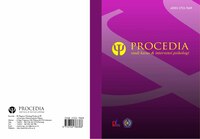Meningkatkan pola komunikasi pada pasangan suami-istri
DOI:
https://doi.org/10.22219/procedia.v11i2.24444Keywords:
Assertive, communication, conflict, family, solution-focused therapyAbstract
Interpersonal communication within the family is very important, because with interpersonal communication one can find out what each one wants or does not want, because it can be emotionally, behaviorally, and interpersonally beneficial. The assessment used interviews, observation and the giving of the couple communication satisfaction scale (CCSS). Intervention solution focused therapy (SFT) is given for improve partner communication, which was originally only kept under wraps to become more active and effective. The results of the intervention showed that there was a change in the pattern of communication between partners which tended to be repressed into a more open pattern of communication.
Komunikasi interpersonal dalam keluarga sangat penting, karena dengan komunikasi interpersonal seseorang dapat mengetahui apa yang diinginkan atau tidak diinginkan masing-masing, karena dapat bermanfaat secara emosional, perilaku, dan interpersonal. Penilaian menggunakan wawancara, observasi dan pemberian couple communication satisfaction scale (CCSS). Intervention Solution Focused Therapy (SFT) diberikan untuk meningkatkan komunikasi pasangan yang semula hanya dirahasiakan menjadi lebih aktif dan efektif. Hasil intervensi menunjukkan bahwa terjadi perubahan pola komunikasi antar mitra yang cenderung ditekan menjadi pola komunikasi yang lebih terbuka.
Downloads
References
Ariani, A. (2021). Terapi keluarga untuk memperbaiki pola komunikasi orang tua dan anak. Procedia : Studi Kasus Dan Intervensi Psikologi, 8(4), 161–169. https://doi.org/10.22219/procedia.v8i4.14787
Bartoletti, M., Cimoli, T., Michele Pinna, G., & Zunino, R. (2015). Models of circular causality. Lecture Notes in Computer Science (Including Subseries Lecture Notes in Artificial Intelligence and Lecture Notes in Bioinformatics), 8956(1), 1–20. https://doi.org/10.1007/978-3-319-14977-6_1
Cahyani, D. (2020). Solution focused therapy untuk memperbaiki pola komunikasi ibu dan anak. Procedia : Studi Kasus Dan Intervensi Psikologi, 7(2), 65–73. https://doi.org/10.22219/procedia.v7i2.13024
Canary, D. J., Stanfford, L., & Semic, Beth, A. (2002). A panel study of the associations between maintenance strategies and relational characteristics. 64(May), 395–406. https://doi.org/10.1111/j.1741-3737.2002.00395.x
Choi, J. J. (2020). A Case Study of Solution-Focused Brief Family Therapy. American Journal of Family Therapy, 48(2), 195–210. https://doi.org/10.1080/01926187.2019.1691083
Davidson, T. M., Cardemil, E. V. (2009). Parent-Child Communication and Parental Involvement in Latino Adolescents. Journal of Early Adolescence, 29(1), 99–121. https://doi.org/10.1177/0272431608324480
Dermawan, G. Y. (2016). Pola Komunikasi Pasangan Suami-Istri yang Berbeda Agama; Studi Fenomenologi Mengenai Pola Komunikasi Pasangan Suami Istri Beda Agama di Kota Bandung dalam Menciptakan Keluarga yang Harmonis. https://elib.unikom.ac.id/files/disk1/726/jbptunikompp-gdl-ghaniayunt-36260-7-unikom_g-l.pdf
Epstein, N. B., Bishop, D. S., & Levin, S. (1978). The McMaster Model of Family Functioning. Journal of Marital and Family Therapy, 4(4), 19–31. https://doi.org/10.1111/j.1752-0606.1978.tb00537.x
Franklin, C., Zhang, A., Froerer, A., & Johnson, S. (2017). Solution Focused Brief Therapy: A Systematic Review and Meta-Summary of Process Research. Journal of Marital and Family Therapy, 43(1), 16–30. https://doi.org/10.1111/jmft.12193
Greenberg, G., Ganshorn, K., & Danilkewich, A. (2001). Solution-focused therapy. Counseling model for busy family physicians. Canadian Family Physician, 47(NOV.), 2289–2295.
Johnson, B. E., & Ray, W. A. (2016). Family Systems Theory. Encyclopedia of Family Studies, 1–5. https://doi.org/10.1002/9781119085621.wbefs130
Jones, A. C., Jones, R. L., & Morris, N. (2018). Development and Validation of the Couple Communication Satisfaction Scale. American Journal of Family Therapy, 46(5), 505–524. https://doi.org/10.1080/01926187.2019.1566874
Kim, J., Jordan, S. S., Franklin, C., & Froerer, A. (2019). Is Solution-Focused Brief Therapy Evidence-Based? An Update 10 Years Later. Families in Society, 100(2), 127–138. https://doi.org/10.1177/1044389419841688
Kurniawati, D. (2013). Pola Komunikasi Interpersonal dalam Konflik Antara Pasangan Suami Istri Beda Budaya yang Baru Menikah. Jurnal The Messenger, 5(1), 46. https://doi.org/10.26623/themessenger.v5i1.143
Najoan, I. (2015). Pola komunikasi suami istri dalam menjaga keharmonisan keluarga Di desa tondegesan ii kecamatan kawangkoan Kabupaten minahasa. IV(4).
Rahmah, H. (2020). Solution focused therapy untuk memperbaiki komunikasi pada pasangan suami istri. 20(2). https://doi.org/https://doi.org/10.47732/alfalahjikk.v20i2.143
Rahmawati, & Gazali, M. (2018). Pola komunikasi dalam keluarga. 11(2), 163–181. https://doi.org/DOI: http://dx.doi.org/10.31332/am.v11i2.1125
Ratner, H., George, E., Iveson, C. (2012). Solution focused brief therapy: 100 key points and techniques. Routledge.
Safira, T. (2020). Solution Focused Therapy untuk Memperbaiki Pola Komunikasi Keluarga. Procedia : Studi Kasus Dan Intervensi Psikologi, 8((1)). https:doi.org/ 10.22219/procedia.v4i1.11965
Sheehan, A. H., & Friedlander, M. L. (2015). Therapeutic Alliance and Retention in Brief Strategic Family Therapy: A Mixed-Methods Study. Journal of Marital and Family Therapy, 41(4), 415–427. https://doi.org/10.1111/jmft.12113
Yan, S., & Zhou, Y. (2016). Research of Work-Family Balance Based on Family Life Cycle. Open Journal of Social Sciences, 04(11), 218–224. https://doi.org/10.4236/jss.2016.411018
Downloads
Published
How to Cite
Issue
Section
License
Copyright (c) 2023 Nidaan Fajriyah

This work is licensed under a Creative Commons Attribution-NonCommercial 4.0 International License.






